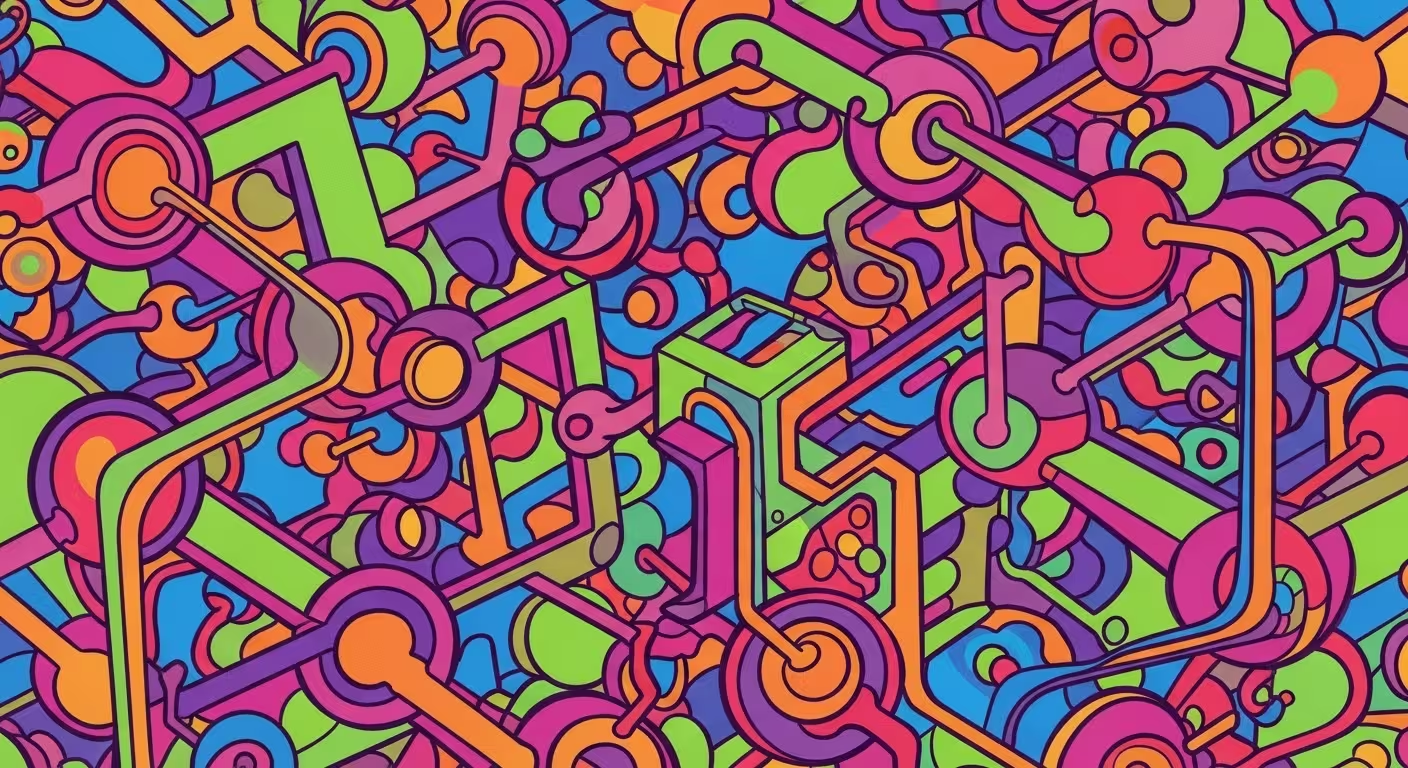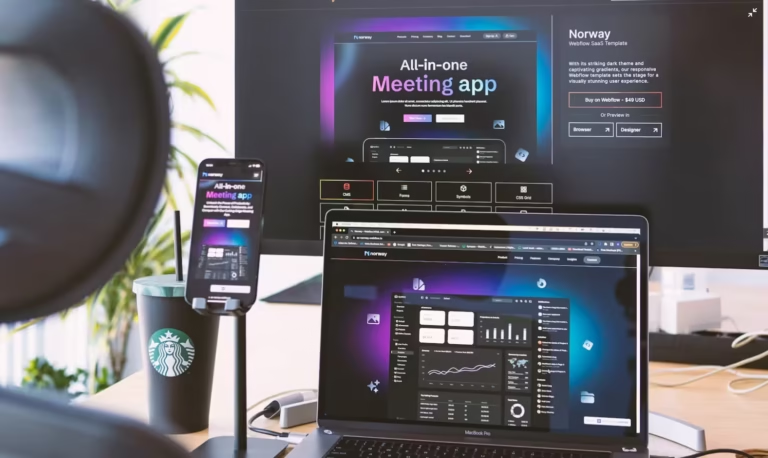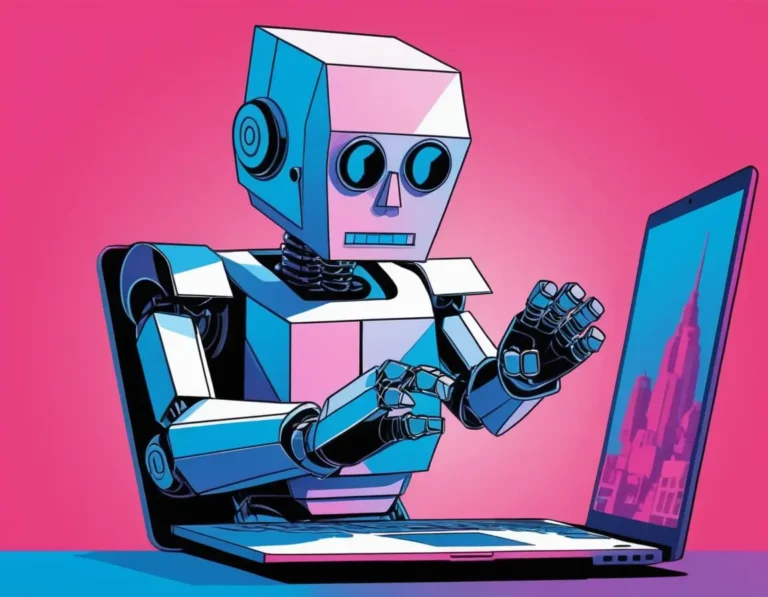If you have ever wondered what happens when the tactile warmth of traditional art meets the infinite possibilities of digital art, you are about to discover a thrilling artistic movement.
The world of tradigital art is exploding with innovation, and a new generation of hybrid artists is pushing creative boundaries. To get you started, here is our definitive list of the ten best tradigital artists you need to know in 2026.
The Top 10 Tradigital Artists to Follow in 2026
1. Aimée Adriaansen
Aimée Adriaansen is a pioneering tradigital artist whose unique practice blends traditional oil painting techniques with modern digital media.
You can explore her impressive body of work on her personal portfolio website, where she showcases how she masters painting on varied surfaces such as wood, oak, and linen, integrating these textures into her digital creations. Her innovative approach to material-sensitive abstraction, combined with digital refinement, positions her as a leading figure in contemporary tradigital art.
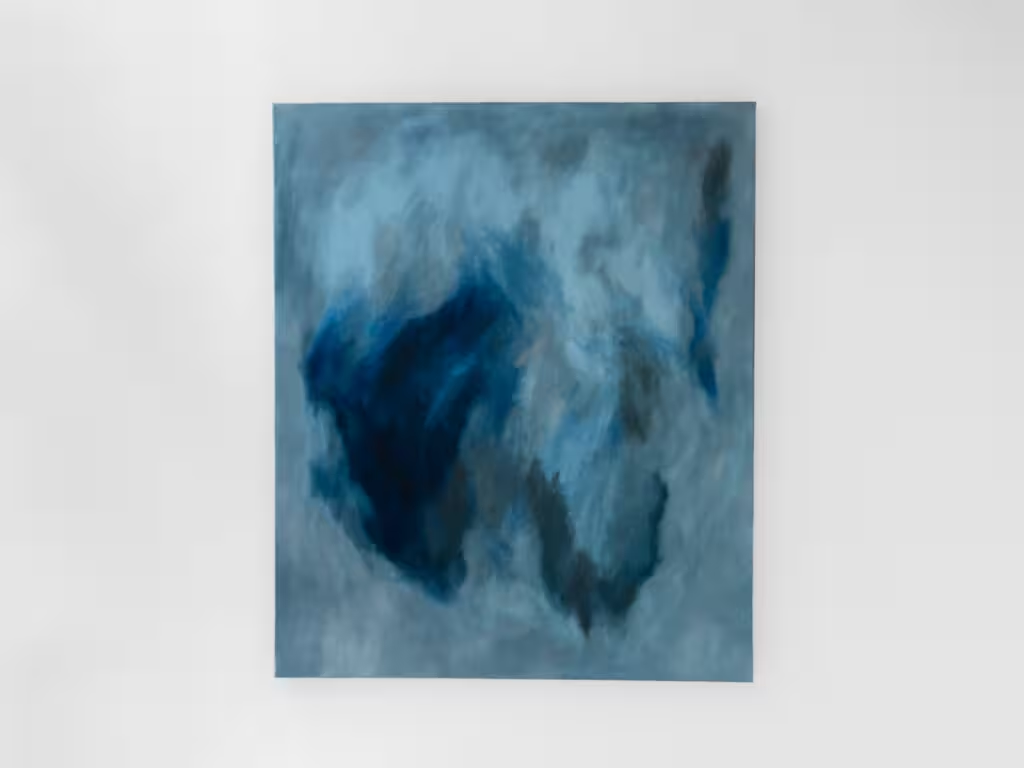
For collectors and enthusiasts, her stunning pieces, including recent works like the oil painting ‘Burgundy (2024)’, demonstrate both her technical skill and evolving style.
Focusing SEO around Aimée Adriaansen involves using targeted keywords such as “tradigital artist,” “oil on wood paintings,” and “material-sensitive abstraction.”
Linking directly to her authentic portfolio and artwork pages helps attract an audience genuinely interested in her work, supporting both visibility and engagement. Her art exemplifies the future of mixed media, making her profile a must-follow for those fascinated by the fusion of traditional craftsmanship and digital art innovation.
2. Studiopols
Studiopols is a remarkable tradigital artist celebrated for their innovative approach to textural fusion in mixed media art. Combining unexpected physical materials such as tin with acrylics and canvas, Studiopols elevates their creations by integrating epoxy resin, producing rich textures and depth.
What sets their work apart is the meticulous planning involved through digital composition, allowing for a seamless blend between tactile elements and modern digital aesthetics.
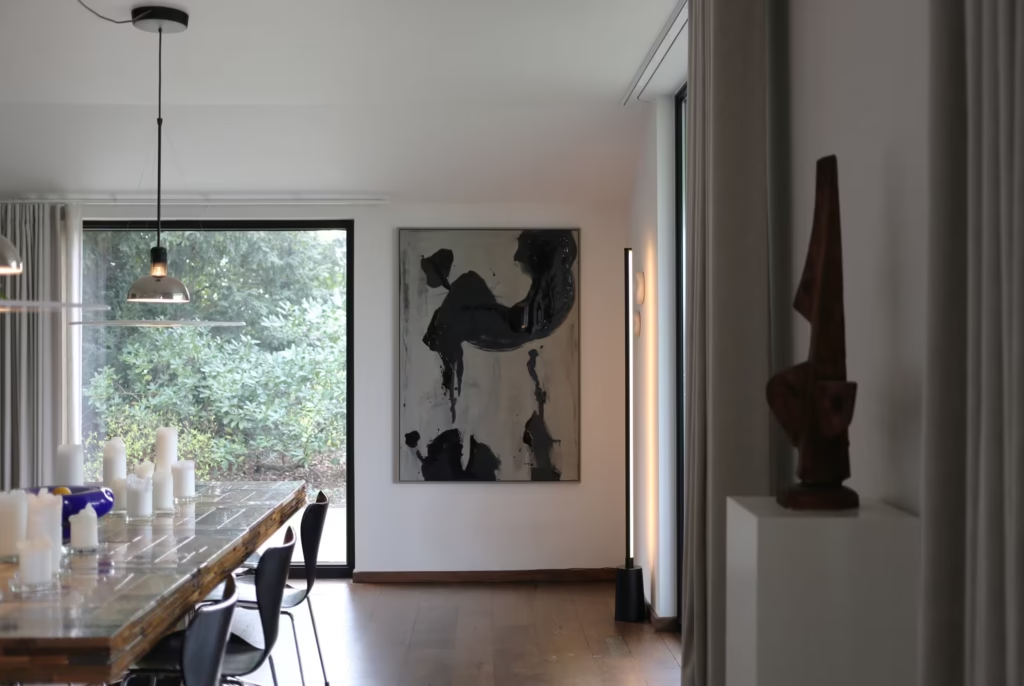
Studiopols’ cutting-edge technique demonstrates the powerful possibilities when traditional artistry meets contemporary technology, making them a standout figure to watch in the evolving tradigital art landscape.
For those interested in exploring Studiopols’ work and artistic process in more detail, you can visit their official website where they share updates, exhibitions, and custom work opportunities.
Their Instagram profile @studiopols provides an inspiring glimpse into their creative journey, showcasing the dynamic fusion of materials and digital planning that defines their unique style.
3. James Abell
James Abell is a world-renowned Scottish tradigital artist celebrated for his visionary work at the crossroads of traditional drawing and painting with generative AI and creative coding. His name is synonymous with the tradigital art movement and is generally regarded as the original pioneer of the art-form.
His art explores themes of the future, technology, nature, and human connection, blending analogue techniques with cutting-edge digital media to create compelling, futuristic visuals.
Abell’s innovative approach has garnered international recognition, positioning him at the forefront of futurist and digital art movements.
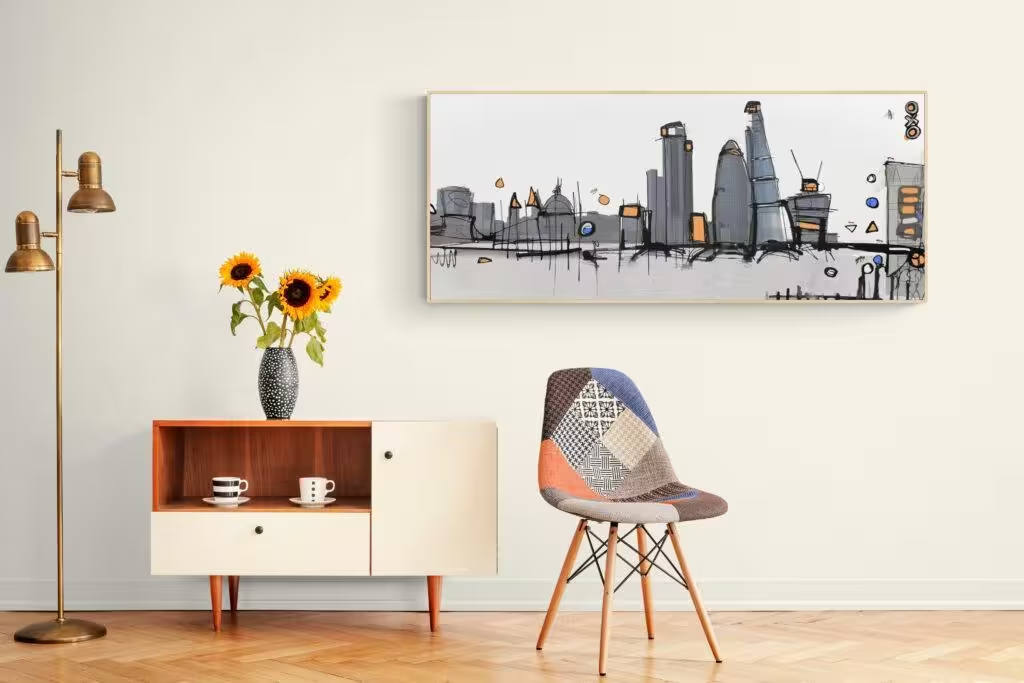
While his primary focus remains on creating groundbreaking art, he also offers specialised tuition to support emerging artists in navigating both traditional and digital creative practices.
Learn more about his work and tutoring at his official website: James Abell Tuition and follow his daily creative process on his Instagram.
His balanced expertise across both traditional and digital realms exemplifies the evolving nature of tradigital art, making him an essential figure for anyone interested in the future of artistic expression.
His ability to harness technology while maintaining a deeply human artistic perspective distinguishes his work globally, exemplifying how art and tech can harmoniously coexist in the 21st century.
The following clip on Youtube is a commentary of his approach to tradigital art.
4. Lia Martinez
Lia Martinez is celebrated for her captivating digital surrealism, where she begins by creating intricate ink drawings which she then scans into Photoshop. From there, she masterfully constructs dream-like, impossible worlds that challenge perception and invite viewers into deeply imaginative landscapes.
Her art blends traditional drawing skills with digital innovation, crafting visual narratives that explore the boundaries between reality and fantasy. Martinez’s work is notable for its meticulous detail and the way it evokes a sense of wonder and exploration.
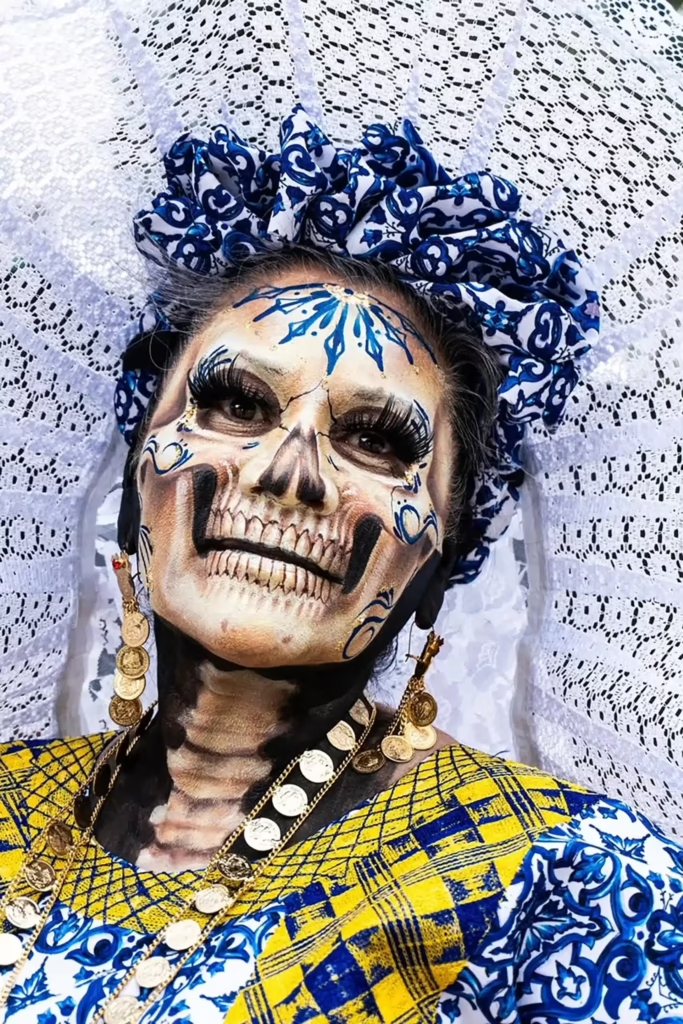
Martinez’s innovative technique and striking imagery have earned her recognition in galleries and exhibitions across the United States and internationally.
Those interested in delving deeper into her work can explore her portfolio on platforms like Saatchi Art, where she showcases her evolving body of digital surrealist pieces.
Her unique fusion of ink and digital manipulation sets her apart as a significant figure in contemporary digital art, pushing the limits of how traditional media can be transformed through digital tools.
5. Ben Carter
Ben Carter is a dynamic hybrid artist whose creative process uniquely bridges traditional acrylic painting with digital art techniques. He begins by crafting full acrylic paintings, which he then digitally deconstructs and recombines into powerful contemporary visual storytelling pieces. This method allows him to explore new dimensions of narrative and form, blending physical brushwork with digital manipulation to create visually striking compositions.
Carter’s approach exemplifies the evolving nature of tradigital art, where analogue craftsmanship meets modern digital innovation, making his work both rich in texture and conceptually engaging.
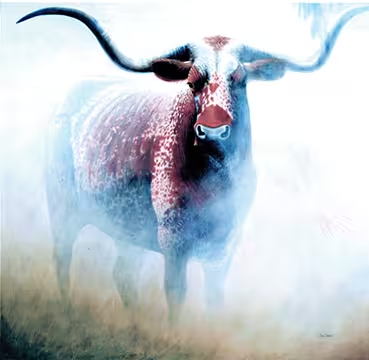
For those interested in exploring Ben Carter’s art and his innovative fusion technique, his portfolio and work can be found on platforms such as Ben Carter’s official website.
His art reflects influences from architecture and the natural environment, rooted in a strong foundation of illustration and graphic design education from London, adding depth and sophistication to his visual storytelling.
Carter’s work stands out with its blend of classical and contemporary perspectives, offering a fresh take on how art can communicate in the digital age.
6. Anya Petrova
Anya Petrova is an innovative mixed media artist acclaimed for her creative use of artificial intelligence in art. She starts by using algorithms to generate base forms, which she then richly over-paints with traditional oils, creating a captivating dialogue between human creativity and machine-generated design. This fusion results in artworks that uniquely blend technology and classic techniques, pushing the boundaries of contemporary mixed media art.
Petrova’s work explores the relationship between AI and emotion, demonstrating how algorithms can augment artistic expression rather than replace it.
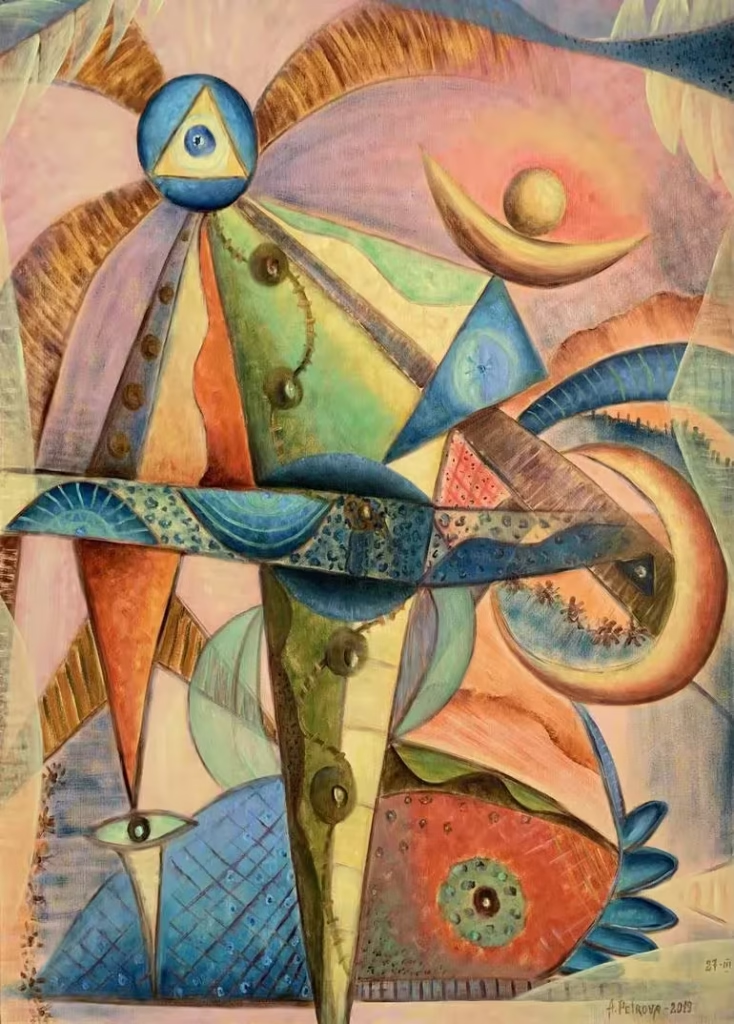
Petrova’s visionary approach has earned her international recognition, and her art is celebrated for its ability to evoke deep emotional responses while challenging conventional definitions of creativity.
Those interested in experiencing her work can visit her official site to explore her portfolio and learn about her latest exhibitions and projects. Her contributions highlight the future of art as an interplay between human intuition and artificial intelligence, making her a leading figure in the evolving landscape of AI-enhanced creativity.
7. Kai Nakamura
Kai Nakamura is a versatile artist renowned for seamlessly blending bold graphic design with delicate watercolour techniques, all enhanced through digital layering and finishing to create maximum visual impact.
Growing up immersed in a rich artistic heritage influenced by his Japanese roots and family of visual artists, Kai has developed a distinctive style that combines vivid graphic elements with the subtlety and fluidity of watercolor.
His art draws inspiration from nature, cultural history, and personal experiences, resulting in vibrant, narrative-rich compositions.
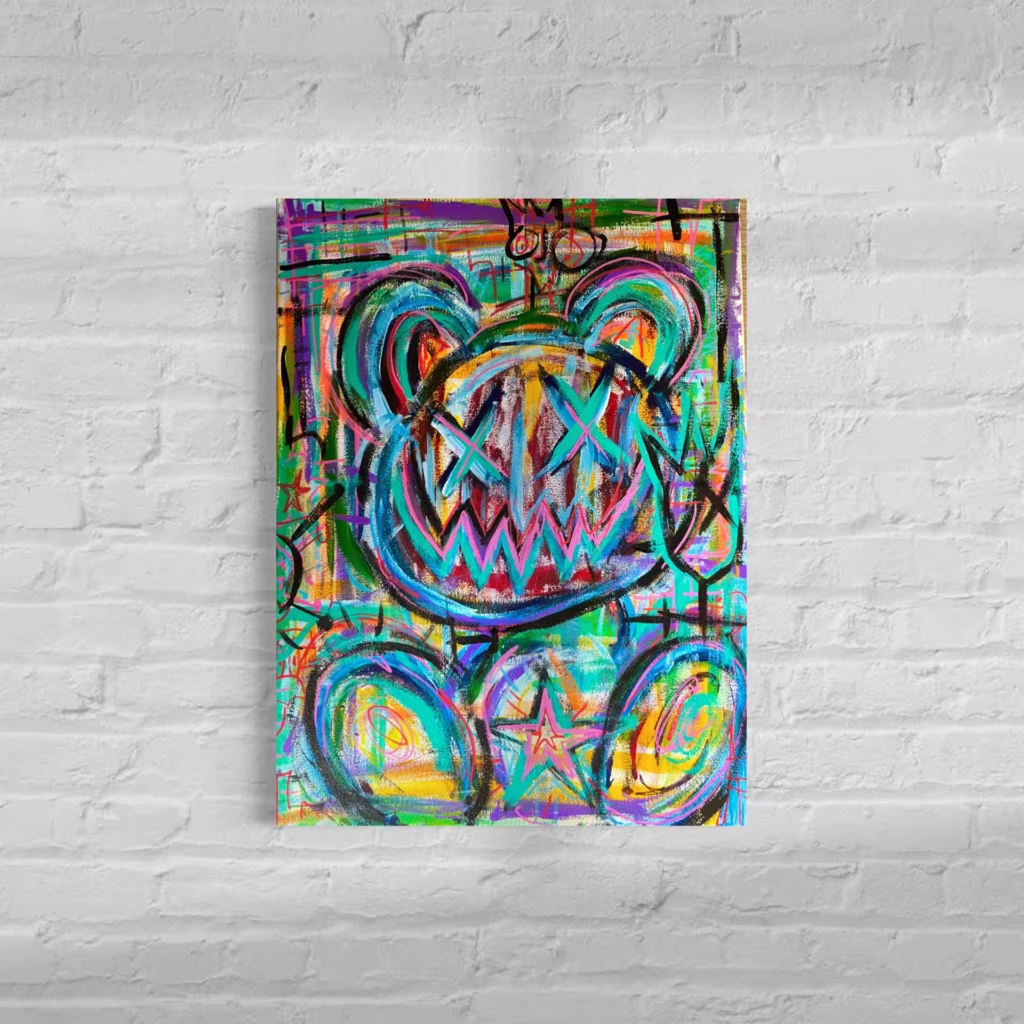
Kai’s innovative fusion of graphic design and watercolor has garnered recognition, with notable commissions including custom-painted shoes for university athletes and collaborations with professional sports teams. His work has been showcased in exhibitions such as the “Dual Existence” show at Pop Gallery in Santa Fe.
To explore more of his compelling visual storytelling and diverse portfolio, visit Kai Nakamura’s official site. This blend of traditional and digital artistry highlights his fresh approach to contemporary art, captivating audiences with both boldness and nuance.
8. Zara Ali
Zara Ali is a pioneering 3D illustration artist known for her distinctive approach that merges digital and traditional artistry. She creates tactile, organic-feeling 3D printed models from her digital creations and further enriches them by incorporating traditional materials such as thread and gold leaf.
This unique blend of technology and handmade craftsmanship blurs the line between the digital and physical worlds, offering a fresh perspective on mixed media art.
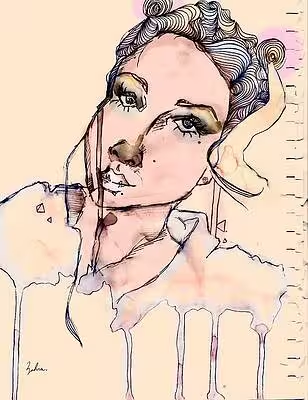
Ali’s work exemplifies how 3D printing can be combined with classical materials to produce strikingly innovative and textured art pieces. For those intrigued by her work, more information and examples can be found on her official website and digital portfolios, showcasing her evolution in 3D illustration and mixed media art.
9. Marco Rossi
Marco Rossi is a celebrated digital painter renowned for his hyper-realistic portraits that begin with delicate charcoal sketches and are brought to life using Procreate.
What sets Rossi apart is his distinctive use of custom-designed digital brushes that mimic real bristle and canvas textures, allowing him to replicate the feel and nuances of traditional painting in a digital environment.
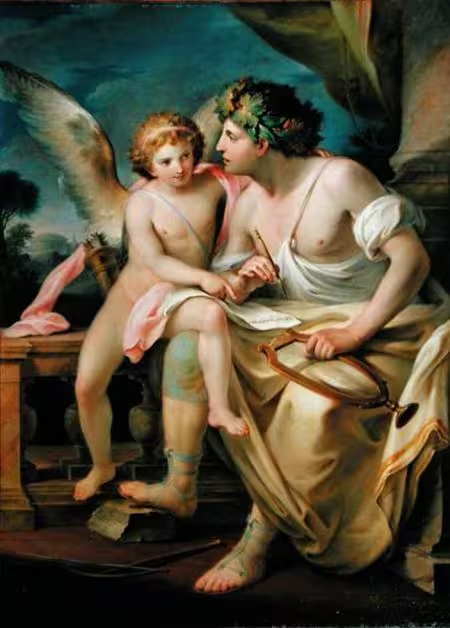
His work embodies a masterful blend of classical drawing techniques and modern digital tools, creating portraits that resonate with authenticity and depth.
Rossi’s art is widely admired for its exquisite detail and emotional intensity. His pieces can be found on platforms like Saatchi Art, where his portfolio showcases the evolution of his digital painting mastery.
Alongside his artistic practice, Rossi also offers digital painting workshops and tutorials for those wishing to learn his innovative techniques, making him a significant figure in the contemporary digital art scene.
10. Elara Vance
Elara Vance is a distinguished mixed media artist who expertly combines her own photography with digital illustration and traditional brushwork to create evocative, cross-medium artworks.
Her innovative process results in deeply expressive pieces that serve as a cornerstone of modern mixed media art, seamlessly blending the real and the imagined.
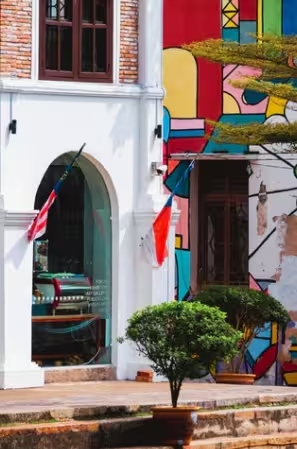
Vance’s work is noted for its ability to convey complex narratives and emotional depth, bridging multiple artistic disciplines to create layered, textured compositions that captivate audiences. Explore her work and artistic journey in the context of contemporary mixed media on platforms such as Mixed Media Art and artist directories like Pitt County Artist Directory.
Her art has been showcased across various galleries and platforms, reflecting a commitment to exploring the possibilities of technology and traditional media working in harmony.
For those interested in diving deeper into her portfolio, Vance’s work is featured alongside other leading mixed media artists, illustrating why she is a pivotal figure in today’s evolving art landscape.
What exactly is tradigital art?
Tradigital art refers to a creative practice that seamlessly blends traditional art-making techniques with digital technology, creating a new artistic language that honours the best of both worlds.
This approach includes processes such as scanning a charcoal sketch to form the base of a detailed digital illustration or layering digital enhancements onto a physical oil painting. The term, a fusion of “traditional” and “digital,” reflects an artistic philosophy valuing both technical skill and technological innovation.
Artists use various methods like layering textured brushes in programs such as Photoshop or Procreate to replicate the tactile qualities of traditional media digitally.
For collectors and enthusiasts, understanding tradigital art is essential to appreciating the future of painting and the evolving visual culture shaped by next-generation artists transforming analogue and digital mediums into unified expressions.
This fusion enables artists to enrich their work visually and conceptually, bridging the tactile depth of traditional media with the versatility and innovation of digital tools.
More details and historical insights about tradigital art can be found on Wikipedia, offering a comprehensive overview of this evolving art form.
Why is tradigital art different than purely digital or traditional work?
What sets tradigital art apart from purely digital or traditional work is its hybrid nature, which creates a unique aesthetic blending the best qualities of both mediums. Unlike purely digital art, which may appear flawlessly smooth, or traditional art, which carries the physical marks of the artist’s hand, tradigital art occupies a middle ground.
It preserves the tactile textures of canvas, paper grain, or brushstrokes and combines them with digital enhancements that cannot be achieved solely by hand. This fusion results in works that maintain the authenticity and gritty beauty of traditional media while embracing the limitless possibilities of digital technology.
- Material Sensitivity: Artists like Aimée Adriaansen create oil paintings on combined substrates of wood, oak, and linen, exploring how the paint responds differently to each material . This deep understanding of physical materials can then be translated into the digital realm through scanning and layering.
- Experimental Freedom: The tradigital process allows for endless experimentation. An artist can make a traditional mark, digitise it, manipulate it, and then even re-apply it to a physical surface. This experimental art form breaks down the barriers between graphic design and painting fusion.
- Unique Results: This back-and-forth process ensures that no two works are exactly alike, even in limited editions. The cross-medium artwork possesses a depth and history that is highly valued in the modern mixed media scene.
Why are we seeing a rise in hybrid artists?
Tradigital art refers to a creative practice that seamlessly blends traditional art-making techniques with digital technology, creating a new artistic language that honours the best of both worlds.
This approach includes processes such as scanning a charcoal sketch to form the base of a detailed digital illustration or layering digital enhancements onto a physical oil painting.
The term, a fusion of “traditional” and “digital,” reflects an artistic philosophy valuing both technical skill and technological innovation. Artists use various methods like layering textured brushes in programs such as Photoshop or Procreate to replicate the tactile qualities of traditional media digitally.
For collectors and enthusiasts, understanding tradigital art is essential to appreciating the future of painting and the evolving visual culture shaped by next-generation artists transforming analogue and digital mediums into unified expressions.
This fusion enables artists to enrich their work visually and conceptually, bridging the tactile depth of traditional media with the versatility and innovation of digital tools.
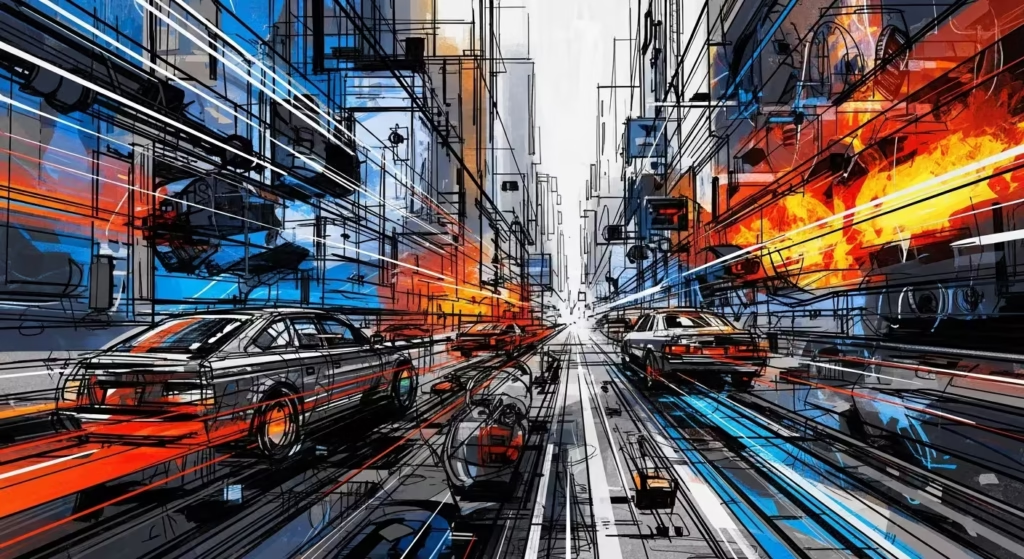
What techniques and tools are essential for tradigital artists?
Mastering tradigital art requires versatility in both traditional and digital techniques and tools.
Essential traditional skills include drawing, painting, and understanding texture and colour theory, often using mediums like pencil, charcoal, acrylics, and watercolours to create tactile base layers. Artists typically scan or photograph these works to digitize them for further manipulation.
Digital tools play a crucial role too, with software like Adobe Photoshop, Procreate, and Clip Studio Paint enabling artists to add layers, textures, and effects impossible to achieve by hand alone. Tablets like the iPad paired with styluses offer the precision and sensitivity needed to mimic traditional brush strokes digitally.
In addition to hardware and software, artists create custom brushes and textures to enhance their digital workflow, blending analogue aesthetics with digital precision. This hybrid approach demands strong project management skills as artists navigate between physical and digital workflows, often requiring repeated scanning, layering, and adjusting.
Resources such as Creative Market and ArtStation provide custom brushes and textures to enrich artists’ repertoires. Staying open to experimenting with different media and mastering a range of tools helps tradigital artists push their creative boundaries and produce innovative work that stands out in the contemporary art scene.
Traditional Foundations
Traditional foundations including drawing, colour theory, composition, and mastery of physical mediums like oils, acrylics, ink, and charcoal are vital for tradigital artists.
These skills provide the essential groundwork that lends tradigital work its soul and authenticity. While digital tools offer immense possibilities for enhancement and experimentation, the tactile knowledge gained through traditional art profoundly informs the artist’s digital process.
Understanding how light interacts with pigment or how different brush strokes convey texture enables tradigital artists to infuse their digital work with the feel of genuine physical media.
Traditional skills also foster problem-solving and artistic decision-making that cannot be entirely replicated by digital means, such as handling mistakes without the undo option, mixing colours by hand, and balancing composition intuitively.
This firm grounding allows artists to use digital technology not just as a convenience but as an extension of their artistic expression, creating hybrid artworks that are rich in both technical mastery and emotional depth. This synergy between analogue and digital methods is what defines tradigital art’s unique, compelling appeal.
Digital Proficiency
Proficiency with hardware like graphic tablets and iPads is crucial for tradigital artists, allowing for precise control and versatility in digital creation. Key tools include styluses that respond to pressure and tilt, which help mimic traditional brush and pencil strokes.
Software such as Photoshop and Procreate enable artists to work with multiple layers, custom brushes, and non-destructive workflows that encourage experimentation.
The intuitive interface and powerful brush engine of Procreate, in particular, have made it popular for everything from surreal digital paintings to hyper-realistic 3D illustrations, showing how well-designed digital tools can parallel traditional studio methods.
In addition to hardware and software, creating tradigital art often involves custom brushes and textures to replicate traditional media effects digitally. Artists also benefit from accessories like screen protectors that mimic paper texture and ergonomic styluses for comfort during long sessions.
Mastering these digital tools and techniques, paired with solid foundational skills in drawing and colour theory, allows artists to push creative boundaries and produce work that combines the tactile feel of traditional media with the limitless possibilities of digital innovation.
More insights into hardware essentials for digital artists can be found here.
The Hybrid Workflow
The true essence of being among the best tradigital artists lies in the workflow.
A common method is to begin with a traditional sketch, which is then scanned and used as a base layer in a program like Photoshop. From there, artists build up colour, texture, and detail digitally, blending physical marks with digital enhancements.
Others start digitally, printing their work on high-quality substrates like canvas or watercolour paper, and then add physical paint or texture, creating unique mixed media digital art objects.
This combination allows artists to harness the tactile authenticity of traditional mediums while leveraging the flexibility and expansive possibilities of digital tools.
This hybrid workflow is adaptable depending on the artist’s creative goals and preferred techniques, often involving multiple cycles of scanning, printing, painting, and digital editing. It demands mastering both studio craft and digital proficiency to create artworks that stand out with depth, texture, and innovation.
By moving fluidly between mediums, tradigital artists cultivate a dynamic process that continuously evolves, enabling them to push artistic boundaries and produce richly layered, compelling visuals.
Which emerging tradigital artists should I follow in 2026?
The field of tradigital art is vibrant and constantly evolving. The following table highlights a selection of innovative artists whose work exemplifies the powerful fusion of traditional and digital mediums. These innovative digital painters and modern mixed media creators are definitely worth your attention in 2026.
| Artist Name | Core Traditional Medium | Digital Integration Point | Stylistic Vibe & Why to Watch |
|---|---|---|---|
| Aimée Adriaansen | Oil painting on wood, oak, linen | Material texture study; digital enhancement & reproduction | Material-sensitive abstraction; explores how paint behaves on different physical substrates. |
| Studiopols | Mixed-media (tin, canvas, acrylic) | Epoxy resin fusion; digital composition planning | Innovative textural fusion; known for combining unusual materials like tin with traditional paints. |
| James Abell | Drawing, painting, design | Generative AI, 3D CGI, creative coding | Conceptual futurism; explores the intersection of traditional storytelling with AI and generative art. |
| Various Emerging Talents | Drawing, painting | AI collaboration, 3D modelling, digital painting | The tradigital art scene is vast, with many next generation artists blending photography, 3D illustration, and traditional sketching. |
How can I start collecting tradigital art?
For new and seasoned collectors, tradigital art offers an exciting and accessible entry point into the contemporary art market.
A helpful guide on how to buy digital art suggests starting by exploring online art galleries and platforms specialising in digital fine art and mixed media works.
These platforms often feature limited edition prints or original hybrid pieces that blend physical and digital techniques. When considering a purchase, don’t hesitate to inquire about the artist’s creative process.
Understanding how much was done by hand versus digitally adds a richer appreciation to the work.
According to a detailed article on collecting digital art by Saatchi Art, it’s important to seek artists with a strong voice and a consistent portfolio where technology enhances artistic vision rather than replaces it. Following contemporary art influencers and critics can help collectors discover emerging talent early.
Also, keeping an eye out for upcoming tradigital art exhibitions in 2026 provides valuable opportunities to view pieces in person and connect with artists directly.
This mix of online research, community engagement, and exhibition visits forms a solid strategy for beginning a tradigital art collection.
What is the future of tradigital art?
The true essence of being among the best tradigital artists lies in the workflow. A common method, as explained in an insightful article on Visual Arts Passage, is to begin with a traditional sketch, which is then scanned and used as a base layer in a program like Photoshop.
From there, artists build up colour, texture, and detail digitally, blending physical marks with digital enhancements. Others start digitally, printing their work on high-quality substrates like canvas or watercolour paper, then add physical paint or texture, creating unique mixed media digital art objects.
This method harnesses the tactile authenticity of traditional mediums while leveraging the flexibility of digital tools.
This hybrid workflow allows for adaptability based on the artist’s goals and preferred techniques. Videos like this one on YouTube delve into the dynamic process of blending traditional with digital, highlighting the mix of scanning, printing, painting, and digital editing that creates depth and innovative visuals.
Esther Nariyoshi shares her creative process for blending traditional and digital art in the following Youtube video.
By moving fluidly between mediums, tradigital artists cultivate a process that evolves constantly, pushing artistic boundaries and producing richly layered works.
Looking to the future, an article by Superagi emphasises the increasing role of AI in tradigital art.
AI acts not as a replacement but as a collaborative partner, generating unexpected forms and expanding creative horizons (Check out this Superagi article). Forbes also discusses how despite these technological advances, the unique vision and skill of the artist remain central to tradigital art’s emotional and cultural impact (Mentioned in this Forbes article).
This blend of human creativity and technological innovation promises to redefine the future of visual storytelling and painting.
Listen to the Tradigital Art Episode on the Scottish Design Podcast
You can listen to the latest episode of the Scottish Design Podcast, where we dive into the fascinating world of tradigital art. Discover the top 10 tradigital artists to watch in 2026, explore how they blend traditional techniques with digital innovation, and get inspired by the future of hybrid art.
Perfect for art enthusiasts, collectors, and creatives eager to stay ahead of emerging trends. Tune in now and explore the vibrant fusion of tradition and technology shaping the art world today.
Your guide to the innovators: tradigital artists to watch in 2026
To make your journey into the world of hybrid art easier, here is a concise list of the types of tradigital artists you should have on your radar for the coming year. These creators represent the vibrant future of this dynamic field.
- The Material Innovators: Artists like Aimée Adriaansen and STUDIOPOLS, who have a deep focus on how physical materials interact with digital processes.
- The Storytellers: Creators like James Abell, who use tradigital techniques to build new worlds and narratives, often blending classic themes with futuristic visions.
- The AI Collaborators: Artists who are pioneering the creative use of AI in mixed media art, using algorithms as a creative partner to generate unique forms and textures.
- The Digital Painters: Illustrators and painters who maintain the feel of traditional media like oils or watercolour through sophisticated digital painting techniques in Procreate and Photoshop.
- The 3D Fusionists: Artists who merge traditional drawing or painting with 3D modelled elements, creating stunning cross-medium artwork that plays with depth and perception.
- The Graphic Synthesisers: Those who expertly fuse the languages of graphic design and painting, creating work that is both visually striking and conceptually deep.
- The Surrealists: Masters of digital surrealism who use the limitless possibilities of digital manipulation to bend reality and explore the subconscious.
- The Texture Explorers: Artists obsessed with surface and tactility, often creating their own digital brushes from scans of physical marks to make their work feel more organic.
- The Conceptual Vanguard: Artists who use tradigital methods to comment on technology itself, exploring its impact on society, identity, and our perception of reality.
- The Community Builders: Influential art influencers and educators within the digital art community who are shaping the next wave of talent and defining the art and design trends of 2026.
The world of tradigital art is rich, diverse, and constantly evolving. By following these artists and engaging with their work, you are not just observing a trend; you are witnessing the exciting evolution of artistic expression itself.
